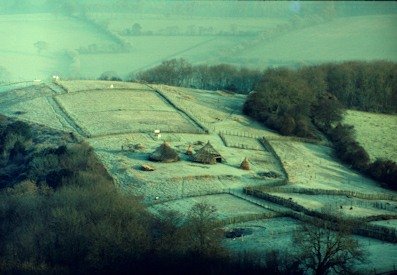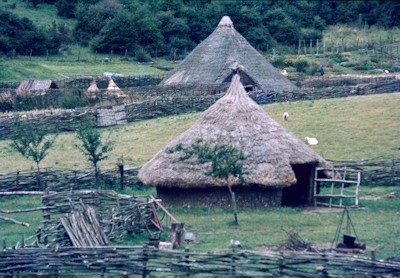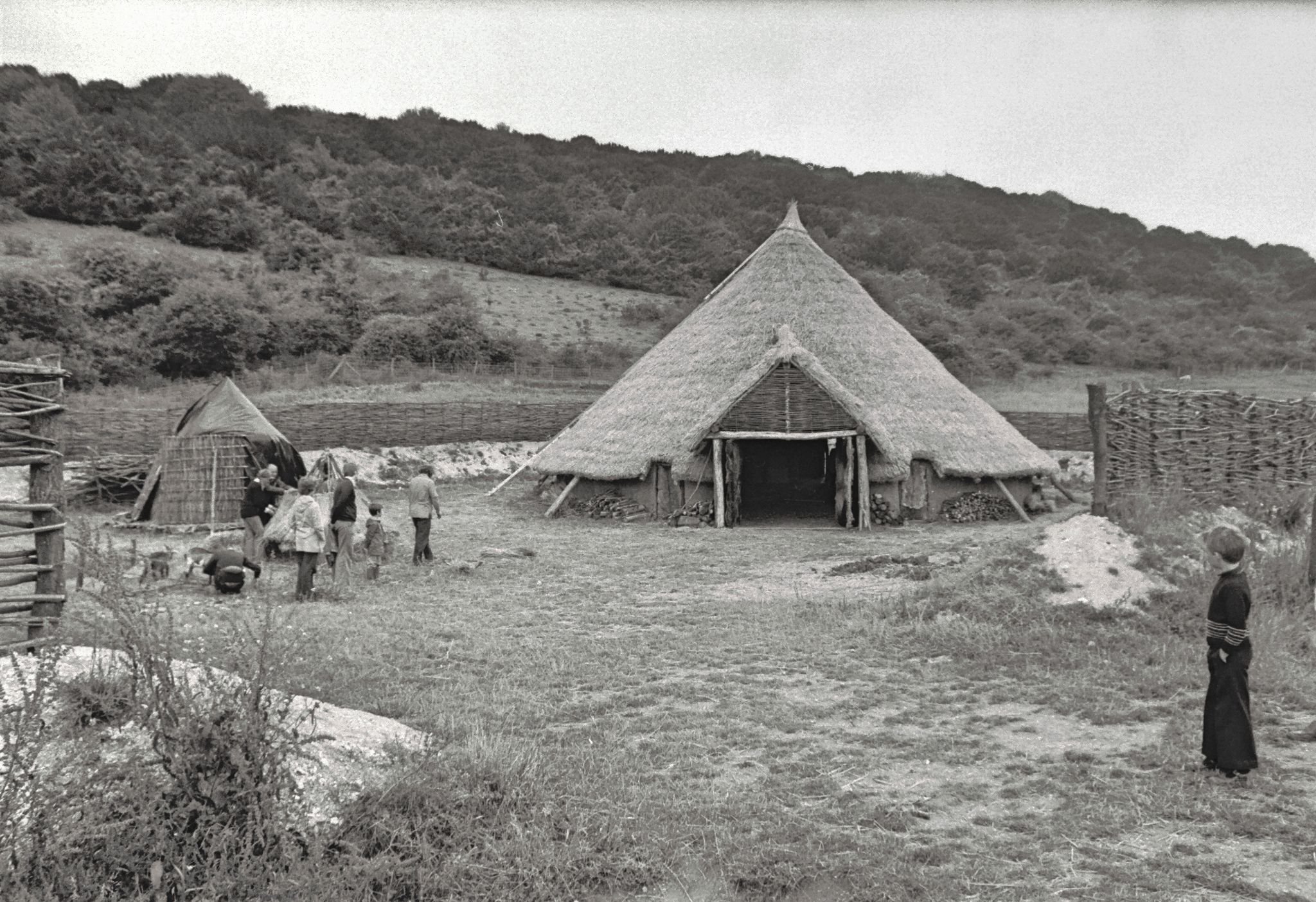Celebrating 50 years of Butser Ancient Farm
Visitors explore Butser Ancient Farm on an open day in 1977. Photo kindly shared by Victor Dunn.
“Butser:
Tucked between a vale and hills,
In rolling farmland lies
A settlement, built through the years,
Beneath the Hampshire skies.
From Iron Age origins has grown
A site of ages past,
With roundhouse homes, and rare breed goats,
Where history will outlast
The transience of mode and fashion,
Ever-changing, fleeting.
The soul of humankind embraced.
The past and present meeting.
Learn ancient skills, live history,
Make future memories too.
At Butser Ancient Farm,
Established 1972.
”
Where we started…
Butser Ancient Farm started life over 50 years ago in 1972 as an experimental research site exploring Prehistoric & Roman Agriculture and Building Techniques. It was an initiative developed by the Council for British Archaeology and the first director was Peter Reynolds (1939-2001).
The location of the original Ancient Farm on Butser Hill, in what is now the Queen Elizabeth Country Park, was partly chosen because of evidence for extensive Iron Age field systems on Butser Hill, still visible in the prehistoric field boundaries and earthworks that cover the landscape.
Little Butser 4378 © Peter J Reynolds/Christine Shaw
By 1974, after two years, the site was opened to the public for its first open days. The demand and interest were such that a second site, the Butser Ancient Farm Demonstration Area (BAFDA) was set up in 1976 in a more accessible location at the bottom of Butser Hill. This allowed for further educational work, workshops and public engagement activities, whilst research on farming techniques and roundhouse construction continued.
BAFDA 5982 © Peter J Reynolds/Christine Shaw
In 1991 the location of Butser Ancient Farm moved to its current site at Bascomb Copse near Chalton. Initially the Iron Age enclosure was created with the construction of several new roundhouses within a hexagonal ditch and bank. Experiments in roman construction soon followed with the building of a working Roman hypocaust followed by surrounding Roman Villa based on excavations from Sparsholt near Winchester. The villa was finally finished in 2003, a process filmed by Discovery TV.
Longbridge Deverill Roundhouse marked out at the Bascomb site 10387 © Peter J Reynolds/Christine Shaw
Alongside continuing research and experimentation, the farm quickly developed into a popular venue for school visits exploring the Iron Age and Roman periods through practical hands on activities. It was open to members of the public on special open days throughout the year. After Peter Reynolds sudden death in 2001 Christine Shaw took on the management of Butser Ancient Farm until 2007 when management transferred to Butser Education CIC, a not-for-profit community interest company with a focus on research and education.
The completed Villa seen behind an Iron Age Roundhouse
© Peter J Reynolds/Christine Shaw
In 2016 the timeline of Butser Ancient Farm further expanded in both directions to include both Anglo-Saxon and Stone Age areas.
In recent years a number of new buildings, experiments and partnerships have developed continuing the legacy of Butser Ancient Farm as a world leading centre for experimental archaeology. Butser has ongoing links with both the Species Recovery Trust and the Rare-breeds Survival Trust, providing a safe site for endangered crops, plants and animals such as Manx Loaghtan Sheep and English Goats. Since 2019 a partnership with UCL Institute of Archaeology brings groups of students each year to learn practical experimental archaeology techniques. From 2019 to 2021 a collaboration with Wessex Archaeology saw the construction of a New Stone Age house based on their excavations of large early Neolithic houses from Horton. In 2021 a multi-award winning project saw the construction of a Bronze Age roundhouse in collaboration with Operation Nightingale - a charity set up to help the healing and rehabilitation of ex-service personnel through involvement in archaeology.
Professor Alice Roberts and Dr Stuart Prior with members of Operation Nightingale in front of our Bronze Age Roundhouse. October 2021
The construction of this Bronze Age Roundhouse filled in the gap in Butser’s timeline, and, from its origins exploring the Iron Age, Butser Ancient Farm now tells the story of over 10,000 years of human history in Britain to thousands of visitors and students each year.
To find out more about the early history of Butser Ancient Farm check out Butser.org.uk.
Where we’re headed…
Our 50th birthday year was full of celebrations and new projects as we marked 50 years of this remarkable project. In 2022 alone…
A second Anglo-Saxon Hall was finished and officially opened, along with a surrounding Anglo Saxon herb garden
We began the construction of a new metalworking, pottery and hot technology building, with the aim to provide a bespoke location for experimentation into ancient technology
We erected a magnificent standing stone as a marker for our 50 years using what we believe to be authentic Stone Age techniques - not content with one stone, to end the year we added a second smaller marker stone aligned to the Winter Solstice Sunrise.
We completed one Iron Age Roundhouse based on evidence from Glastonbury Lake Village and started building a brand new Iron Age roundhouse based on excavations from Danebury Hillfort.
We re-thatched our Bronze Age Roundhouse as we found the smoke wasn’t filtering through the existing thatch properly.
A new mosaic floor was laid in the Roman Villa Hypocaust Room by members of Kings College and the London School of Mosaics. This was partly based on the mosaic found in this location in Sparsholt Roman Villa but, as part of this excavated mosaic was damaged, the missing section design was created as a homage to the first Butser Director, Peter Reynolds.
As our recovery from the pandemic continues we are once again welcoming increasing numbers of school groups and visitors. Our popular storytelling events and Celtic festivals are making a welcome return, helping to raise much needed funds for our ongoing research and educational work.
To support our work we have also launched a Patreon style subscription platform, Butser Plus, where supporters can subscribe to access behind-the-scenes exclusive content documenting the projects at the farm.
2023 marks the 20th anniversary of the opening of our Roman Villa so we are looking forward to continuing the birthday celebrations into 2023! We have lots of other plans for the coming year so watch this space!
No two days at the farm are ever quite the same and we are always happy to welcome and share this special place with visitors near and far, we hope to see you soon!
Be part of our story…
There are lots of ways you can get involved at the farm, from attending an event, joining the Friends of Butser Ancient Farm or our volunteer team or becoming a supporter on Butser Plus.
Share your memories
We’re collecting an archive of memories, stories and photos to help us celebrate 50 years of Butser Ancient Farm and commemorate the many people and projects that have made Butser special since 1972.
Click here to share your memories of Butser Ancient Farm. We’d love to hear from you.
Visitors explore Butser Ancient Farm on an open day in 1977. Photo kindly shared by Victor Dunn.








